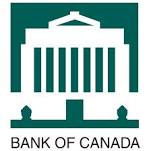The Bank of Canada is concerned about low inflation, however, it believes the risks are balanced. A Canadian interest-rate hike doesn’t appear to be on the horizon – at least for now. Stephen Poloz, Governor at the Bank of Canada, has expressed the need to keep rates low as the Canadian economy still needs support as it continues to face headwinds from the economic crisis.
In a news conference Mr Poloz said:
“If there were a realization of an upside risk, that actually would be good news, given where we are. However, if we realized a downside risk, that would be a more significant event,”
Adding:
“So in that sense, the risks are imbalanced from a policy perspective, even though they look symmetric as a forecast. The downside risk would be a much harder challenge … Policy makers are understandably preoccupied with those concerns. And if they’re wrong and things turn out to be stronger, that would be just fine,”
One of the main indicators of when to increase rates is the bank’s new Labour Market Indicator which assesses how much excess capacity the economy has.
“We can’t ignore the labour market measures at a time when we know that they’re likely to tell us more [about slack in the economy],” he said.
When will Canadian rates increase then?
It’s tough to say when at the moment. Many economists say that low rates could end up over-inflating the economy and cause asset bubbles. However, Mr. Poloz said that “the consequences of an upside risk would be more manageable than those associated with a downside risk.”
He said that the bank believes it will be “around two years” before the Canadian output gap closes and the economy is at full capacity again. If the headwinds linger then “continued policy stimulus may still be needed to offset them even after our excess capacity has been absorbed.”
“In a typical recession, the output gap and the labour market gap look the same. But when there’s structural damage to the economy, then they diverge. [In] a longer cycle, like the one we’re living through, the exit of firms in the export sector are a symptom of that damage,” he said. “When that happens, the labour market gap becomes your ultimate measure of how much capacity there is in the economy.”
The GDP gap is the difference between a country’s current output and its potential output.

